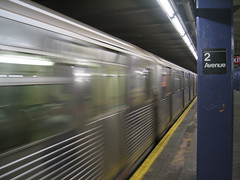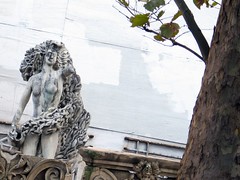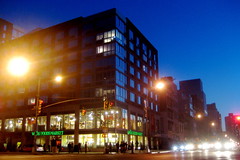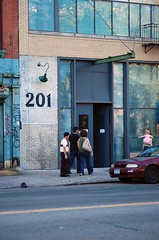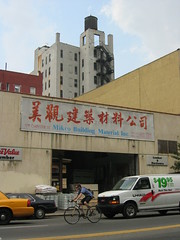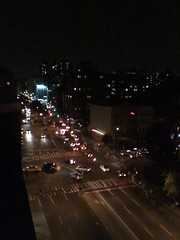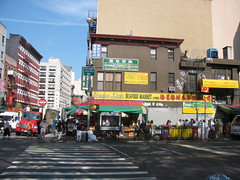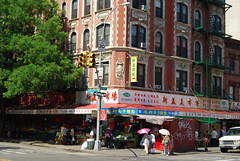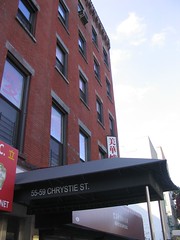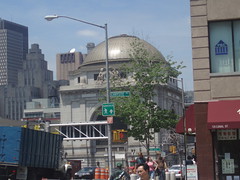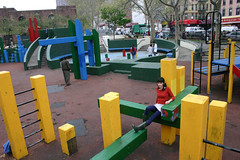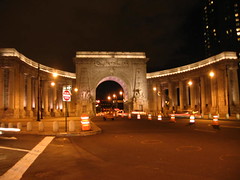West:
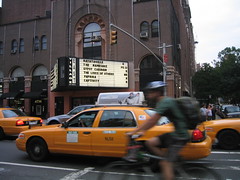
Corner: Built in 1926 as the Yiddish Art Theater, aka
the Yiddish Folks (the
main theater still has a Star of David ceiling); it went on to show
films as the Century and the Stuyvesant (with Walter Matthau
working concessions), and burlesque (featuring
the likes of Blaze Starr) as the Casino East, Gayety and Eden.
Later it was the Phoenix
Theater, where Carol Burnett debuted in Once Upon a Mattress (1959),
and where Oh! Calcutta (1969), Grease (1972) and Best
Little Whorehouse in Texas (1978) had their Off-Broadway premieres.
It had other cinema incarnations as the 12th Street Cinema,
Entermedia and Second Avenue before becoming the Village
East, which is multiplexed with seven screens, but the
main auditorium is still basically intact, making it
"the closest thing" to a "still-operating historic movie palace"
in New York City, according to Cinema Treasures.
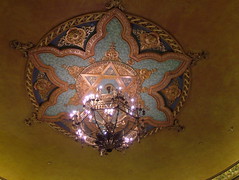
The film The Night They Raided Minsky's was
shot here,
as was part of Woody Allen's segment of New York Stories.
Post-modern artist
David Wojnarowicz lived in an apartment here until his death from AIDS in 1992.
179: Cafe Viva, health-food pizza, which is not
necessarily such a good idea. In 1891, the site was the
Instituto Italiano, an organization founded to promote
the welfare of Italian immigrants.
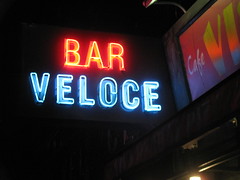
175: The customers at Bar Veloce, a wine bar named for a scooter, were
all taken hostage on June 16, 2002; four people were shot, including
the disturbed gunman, but no one was killed. Formerly Orson's.
Veloce expanded into the space of Monkey Royale, a
coffeehouse that used to be Taylor's, a tasty bakery.
It's now called Bar Carrera, a tapas place.
Carrera, meanwhile, took over the space
next to it, which had been the nearest decent
newsstand to my apartment.
Corner: Kanoyama (formerly Iso, briefly
Koi), well-regarded Japanese,
is on the site of a house built in 1845 by Peter Gerard
Stuyvesant, a descendant of the governor. He died
two years later, willing the house to his
grandnephew on the condition that he change his name
from Stuyvesant Rutherford to Rutherford Stuyvesant.
The renamed heir then gave the house to his father,
Lewis Rutherford, a distinguished astronomer; he set
up an observatory in the backyard that produced some
of the best telescopic photographs of the era.
About 1915 the house was converted to part of the
St. Marks Hospital. It closed in 1930 and was
replaced by the present apartment building in 1935.
| 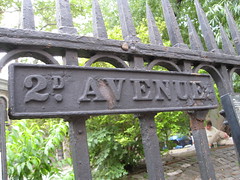 Second Avenue has the distinction of being the longest
avenue in Manhattan, stretching from Houston to 128th
Street. Someday, supposedly, it will have its own subway line.
Second Avenue has the distinction of being the longest
avenue in Manhattan, stretching from Houston to 128th
Street. Someday, supposedly, it will have its own subway line.
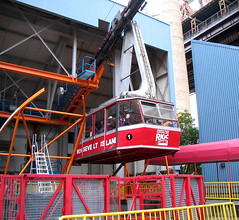
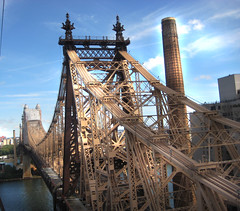
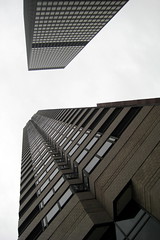
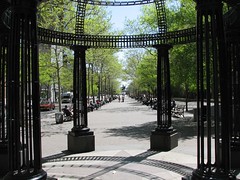

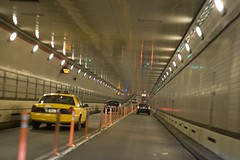
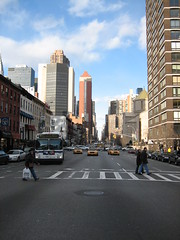


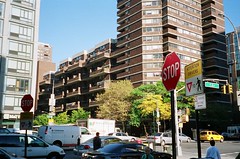

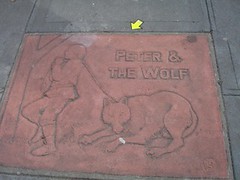
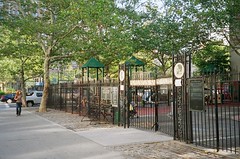



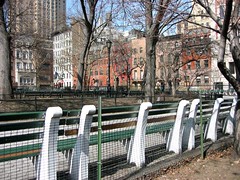
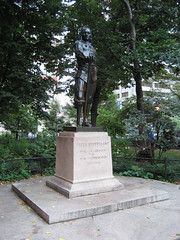
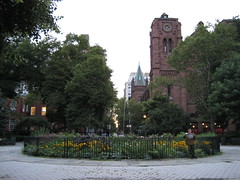
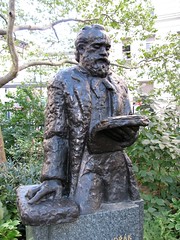
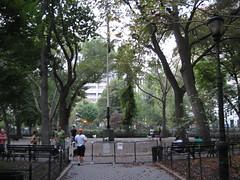
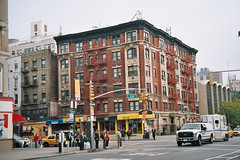
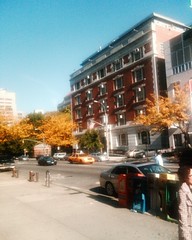

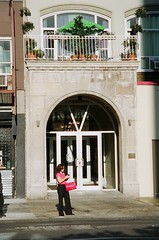
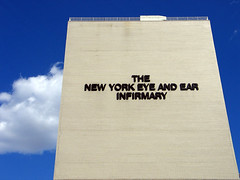

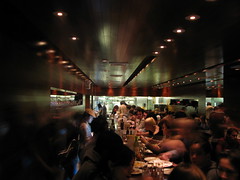


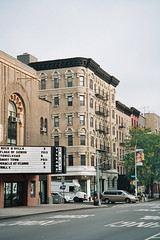
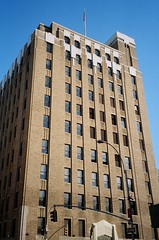
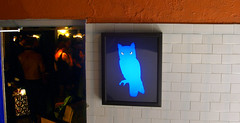





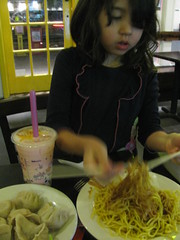
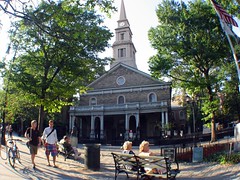


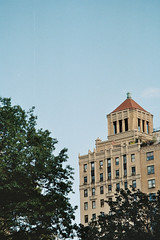


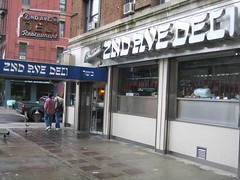

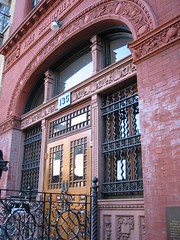
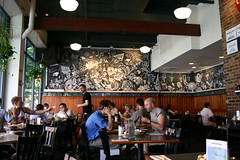
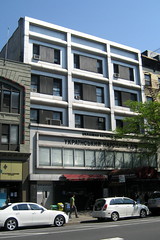

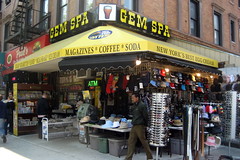
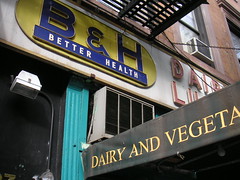

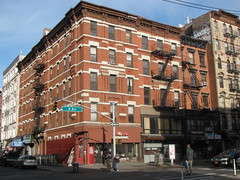
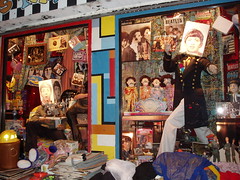
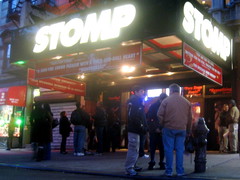



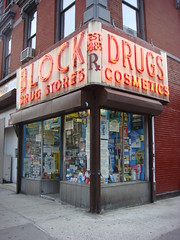





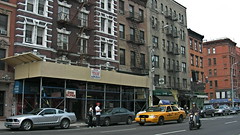

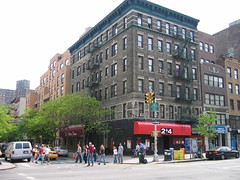

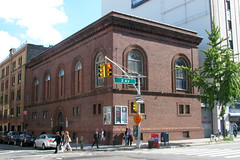 align="right" vspace="4" hspace="4" />
align="right" vspace="4" hspace="4" />
